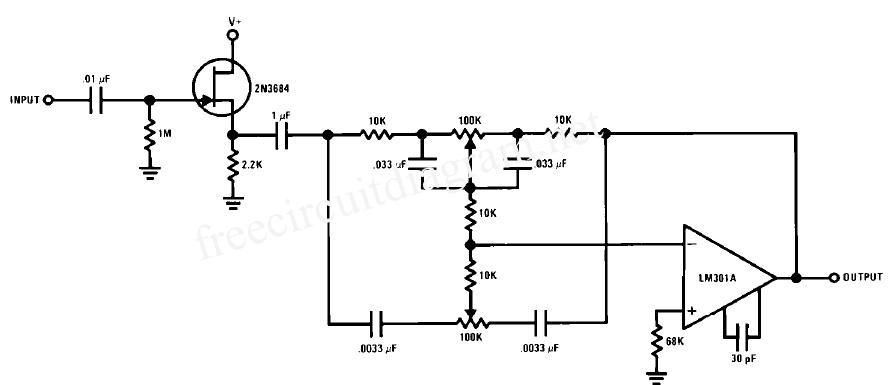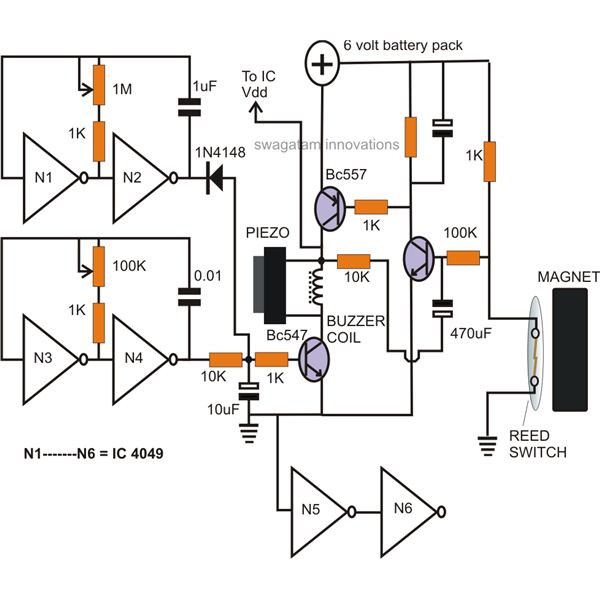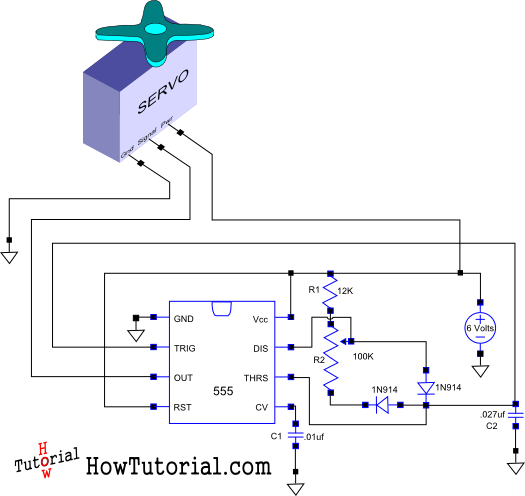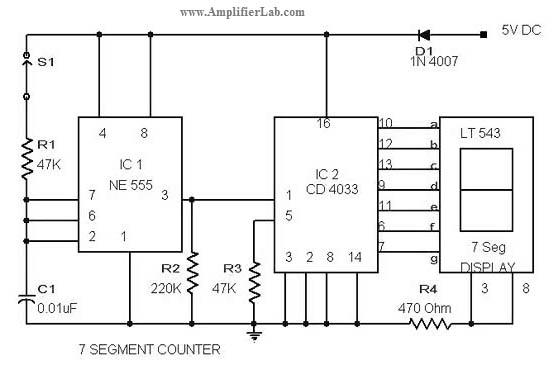
Simple Siren
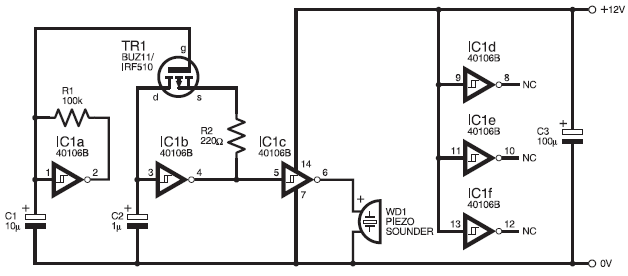
The circuit presented generates a smooth, piercing, wailing siren with minimal components. Additionally, three spare gates of the hex inverter IC1 are available, allowing the possibility of creating a cacophony by operating two sirens from the same integrated circuit. Gate IC1a is configured as a slow oscillator that repeatedly charges and discharges capacitor C1. The charge on C1 is utilized to control the conductance of power MOSFET TR1, which subsequently modifies the frequency of the audio oscillator formed around IC1b. IC1c functions as a buffer. The period of the siren is determined by C1 and resistor R1, while its frequency is influenced by C2 and R2. Ideally, C2 and R2 should be selected to match the resonant frequency of the piezo sounder for optimal volume. When utilizing a piezo tweeter, the Simple Siren can achieve impressive sound levels. An inductive sounder, such as a speaker, can also be employed if a capacitor (for example, 100µF) is connected in series with it.
The circuit utilizes a hex inverter integrated circuit (IC1) which contains multiple logic gates, allowing for flexibility in design and the potential to create complex sound patterns. The configuration of IC1a as a slow oscillator is pivotal; it generates a square wave output that drives the charging and discharging cycle of capacitor C1. This cyclic behavior results in a gradual change in voltage across C1, which is crucial for controlling the gate of the power MOSFET TR1.
Power MOSFET TR1 acts as a switch, modulating the power supplied to the audio oscillator circuit formed by IC1b. By adjusting the charge on C1, the duty cycle of the signal can be altered, thereby changing the effective frequency of the output sound. The audio frequency is further fine-tuned using capacitor C2 and resistor R2, which together set the resonant frequency of the sound produced. Choosing the correct values for these components is essential for achieving the desired audio characteristics and maximizing the output volume.
IC1c serves as a buffer, isolating the oscillator from the load to prevent loading effects that could distort the audio signal. This ensures that the sound produced is clean and maintains its integrity regardless of the load connected.
For applications requiring higher sound output, a piezo tweeter is recommended due to its efficiency and high sound pressure levels. Alternatively, when using an inductive sounder like a speaker, the inclusion of a series capacitor (such as 100µF) is necessary to block DC components while allowing AC signals to pass, which is essential for proper operation and sound quality.
Overall, this circuit is a compact and efficient design, capable of producing a distinctive siren sound with the flexibility to expand its capabilities through the unused gates of the hex inverter.THE circuit shown provides a smooth, piercing, wailing siren with a minimum of components. Not only this, but three spare gates of hex inverter IC1 remain, which means that a true cacophony could be created by running two sirens off the same i. c. Gate IC1a is configured as a slow oscillator which repeatedly charges and discharges capacito r C1. The charge on C1 is used to control the conductance of power MOSFET TR1, which in turn modifies the frequency of the audio oscillator formed around IC1b. IC1c serves as a buffer. The period of the siren is determined by C1 and resistor R1, and its frequency by C2 and R2. Ideally, C2 and R2 will be selected to find the resonant frequency of the piezo sounder for maximum volume.
If a piezo tweeter is used, the Simple Siren will produce an impressive volume. An inductive sounder (e. g. a speaker) may be used if a capacitor (e. g. 100F) is wired in series with it. 🔗 External reference
The circuit utilizes a hex inverter integrated circuit (IC1) which contains multiple logic gates, allowing for flexibility in design and the potential to create complex sound patterns. The configuration of IC1a as a slow oscillator is pivotal; it generates a square wave output that drives the charging and discharging cycle of capacitor C1. This cyclic behavior results in a gradual change in voltage across C1, which is crucial for controlling the gate of the power MOSFET TR1.
Power MOSFET TR1 acts as a switch, modulating the power supplied to the audio oscillator circuit formed by IC1b. By adjusting the charge on C1, the duty cycle of the signal can be altered, thereby changing the effective frequency of the output sound. The audio frequency is further fine-tuned using capacitor C2 and resistor R2, which together set the resonant frequency of the sound produced. Choosing the correct values for these components is essential for achieving the desired audio characteristics and maximizing the output volume.
IC1c serves as a buffer, isolating the oscillator from the load to prevent loading effects that could distort the audio signal. This ensures that the sound produced is clean and maintains its integrity regardless of the load connected.
For applications requiring higher sound output, a piezo tweeter is recommended due to its efficiency and high sound pressure levels. Alternatively, when using an inductive sounder like a speaker, the inclusion of a series capacitor (such as 100µF) is necessary to block DC components while allowing AC signals to pass, which is essential for proper operation and sound quality.
Overall, this circuit is a compact and efficient design, capable of producing a distinctive siren sound with the flexibility to expand its capabilities through the unused gates of the hex inverter.THE circuit shown provides a smooth, piercing, wailing siren with a minimum of components. Not only this, but three spare gates of hex inverter IC1 remain, which means that a true cacophony could be created by running two sirens off the same i. c. Gate IC1a is configured as a slow oscillator which repeatedly charges and discharges capacito r C1. The charge on C1 is used to control the conductance of power MOSFET TR1, which in turn modifies the frequency of the audio oscillator formed around IC1b. IC1c serves as a buffer. The period of the siren is determined by C1 and resistor R1, and its frequency by C2 and R2. Ideally, C2 and R2 will be selected to find the resonant frequency of the piezo sounder for maximum volume.
If a piezo tweeter is used, the Simple Siren will produce an impressive volume. An inductive sounder (e. g. a speaker) may be used if a capacitor (e. g. 100F) is wired in series with it. 🔗 External reference
